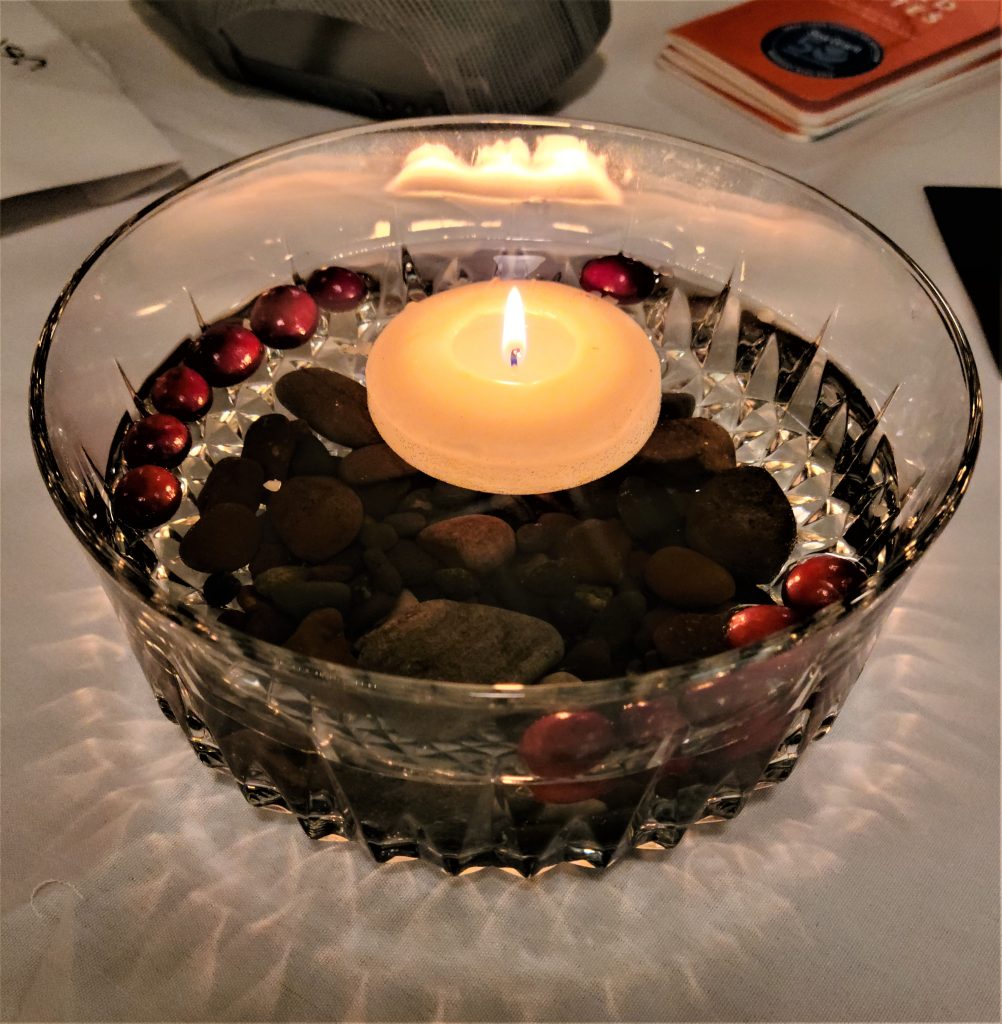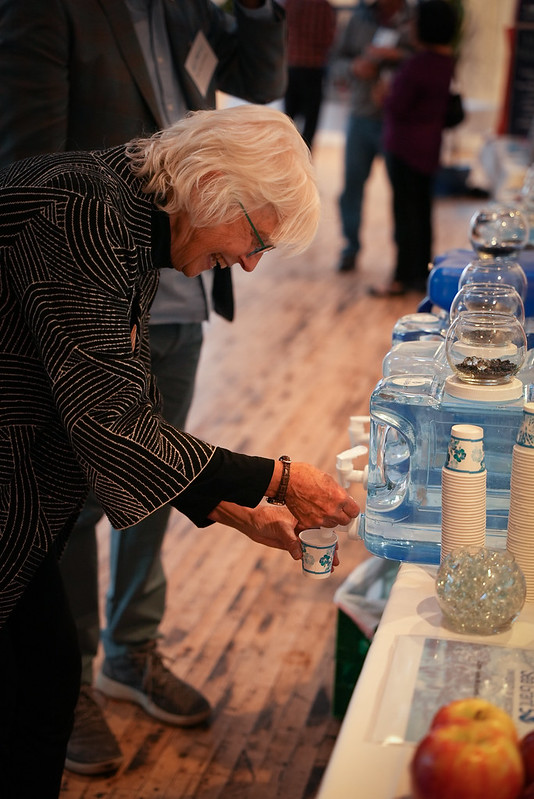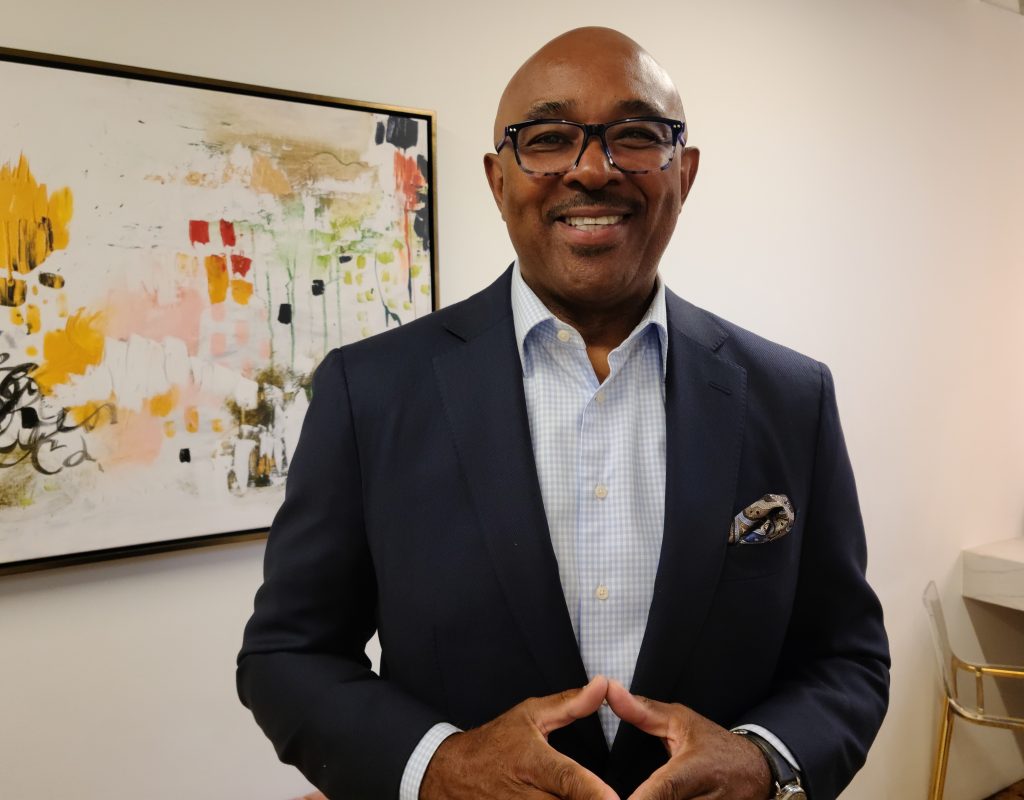Annual Wequiock Creek tobacco blessing
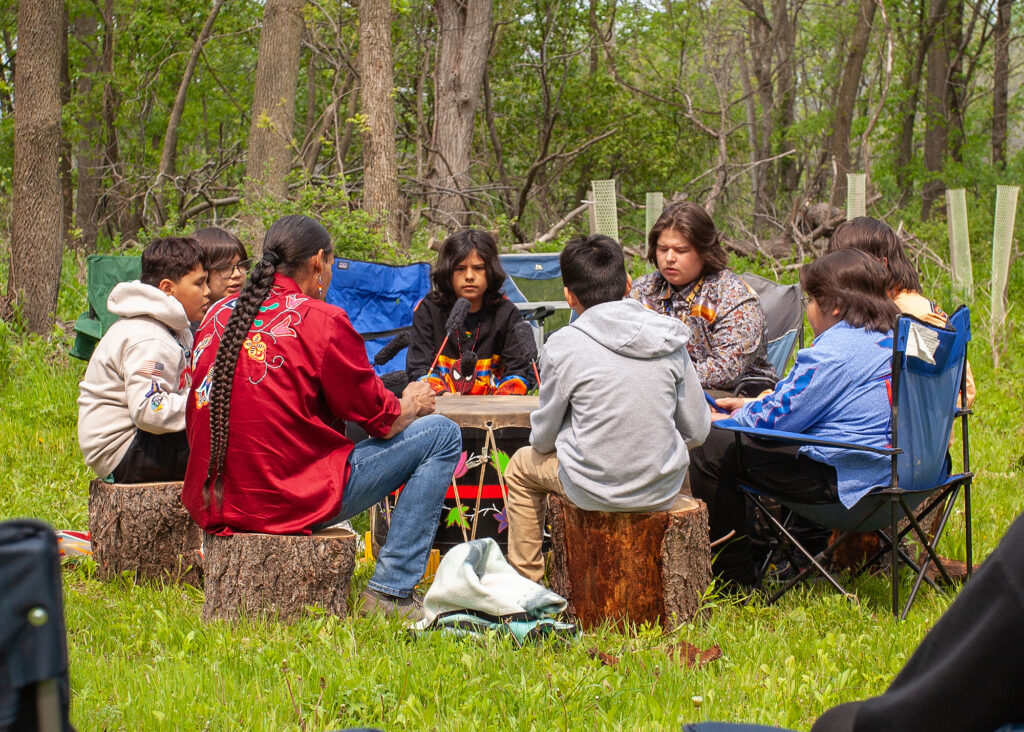
Nikolas Shepard (in red) and the Potawatomi youth drum group provided honor songs for the Wequiock Creek ceremony. Image credit: University of Wisconsin-Green Bay
By Margaret Ellis – Yotsi’nahkwa’talihahte (Wild Rose), Oneida Nation
University of Wisconsin-Green Bay First Nations Graduate Assistant, Wisconsin Sea Grant
Wisconsin Sea Grant and UWGB Center for Biodiversity hosted the third annual tobacco blessing at Wequiock Creek. Wequiock Creek is one of several natural areas managed by UWGB and is a tributary to the Bay of Green Bay. I was honored to have organized and facilitated this year’s tobacco blessing and couldn’t have done it without the previous Graduate Assistant Stephanie Dodge initiating and laying the groundwork for the event.
Dodge, another UWGB First Nations education doctoral student, knew that bringing the Indigenous voice back to the area and ensuring we do that with prayer was essential to the restoration efforts at Wequiock. “Wequiock Creek Natural Area shares a long history of shared land, water, and resources with multiple First Nations,” Dodge said. “Along the shorelines of the Bay and traveling into the Fox River has long been the location of settlements and trade routes for Indigenous people.”
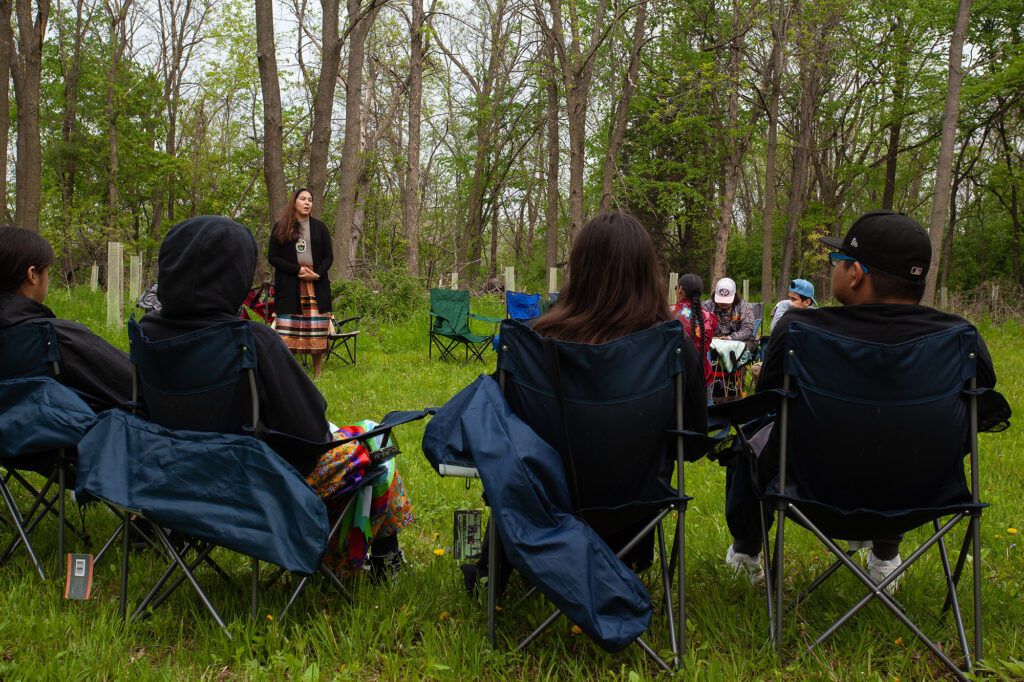
Margaret Ellis introduces the various youth groups present for the blessing. Image credit: University of Wisconsin-Green Bay.
The Ho-Chunk and Menominee Nations both hold ancestral land claims deriving from their creation stories that take place along the banks of Green Bay. Menominee Nation’s creation story takes place on the Menominee River near the mouth of the bay and the Ho-Chunk Nation honors the Red Banks area as their creation story location. For many Nations, their creation or origin stories hold a lot of knowledge and practices that still guide how they live their lives and practice their cultures today. These areas are not just points of interest but rather living, breathing connections to their places of origin.
Potawatomi settled in the area after migration and later through forced removal. The Oneida Nation migrated with the Stockbridge and Brothertown Nations to the area and purchased land from the Menominee Nation in the early 1800s. As you can imagine, the area holds great meaning, historical knowledge and relevance to all the Nations mentioned.
This year’s tobacco blessing was attended by individuals representing the various invested parties in the Wequiock area including Northeast Land Trust, UWGB First Nations Education Department, Wisconsin Department of Natural Resources, Potawatomi members, Oneida Nation members, Menominee Nation members, Ho-chunk Nation members, and others interested and committed to the restoration of a vital tributary to the Bay of Green Bay.
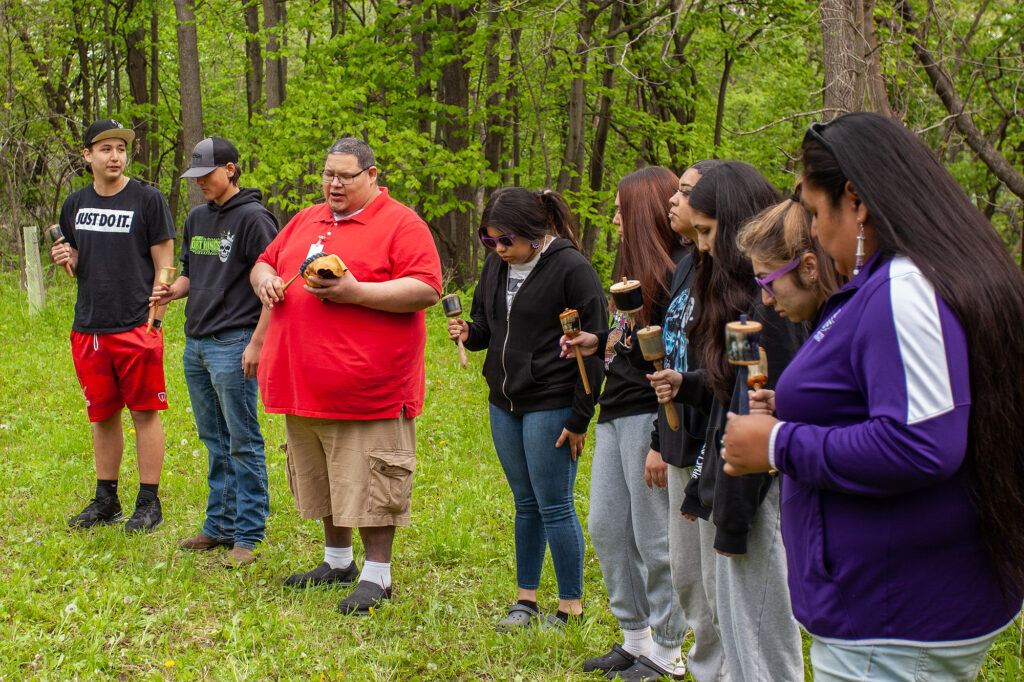
Kanataloloks Zacarias-Skenandore (purple), Oneida Nation Elementary School Earth Song instructor, and Charlie Doxtater (red), Oneida Nation High School earth song instructor with Oneida Nation High School students/singers who provided friendship songs for the event. Image credit: University of Wisconsin-Green Bay
The highlight of the event was the youth groups from three nations: Oneida Nation High School youth singers, Potawatomi youth drum group and Menominee High School Science class students. The Menominee students helped with a site dig earlier that month with Dave Overstreet as a part of a project to recognize the lands as ancestral homelands to the Menominee Nation. The Oneida Nation High School provided earth songs and the Potawatomi youth drum group provided honor songs – a beautiful way to honor the area as well as demonstrate the beauty and uniqueness of each culture.
After the event, there was great feedback about the overall feeling and message that the blessing provided.
“It was quite a moving experience. As I delve deeper into the history of the lands that surround the Green Bay Estuary. I continue to learn,” said Collette LaRue, a Conservation Photographer and UWGB affiliate.
Dan Meinhardt, associate professor of Human Biology and curator, Richter Museum of Natural History at UWGB, has been attending since its inception. “I am honored to have attended all three blessing events. Hearing from First Nations people with special connections to the land, especially in the songs and music of the youth, is always so moving and inspiring. The blessings have become a real highlight for me.”
The tobacco blessing is a great opportunity to reconnect people with each other, with the land, the history of the area and the rich culture it represents. Bringing people together in prayer and community provides a sense of belonging and authenticity that supports any restoration efforts being done at Wequicok Creek Natural Area.
The post Annual Wequiock Creek tobacco blessing first appeared on Wisconsin Sea Grant.Blog | Wisconsin Sea Grant
https://www.seagrant.wisc.edu/blog/annual-wequiock-creek-tobacco-blessing/

